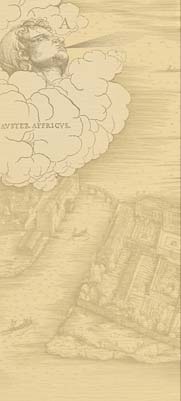Navigation: Coasting
The large galleys of Michael's time could and did sail across open water for considerable distances. Nevertheless, they sailed along the coastline whenever possible. This method of "coasting" was the context in which the medieval system of navigation functioned.
Coasting has sometimes been disparaged in comparison with the epic voyages of Columbus and other explorers in the Age of Discovery. There were, however, sound reasons for coasting in galleys.
The most important reason was that galleys carried very large crews of 200 men and more. These men consumed an immense amount of food and especially water, but there was very limited room to carry it. Without water, the crews soon became dehydrated, capable neither of rowing nor defending their ship—which was the main purpose for having such a large crew in the first place. Accordingly, galleys had to stay close to land to pick up the supplies they needed to maintain the energy and efficiency of the crew.
A second reason for coasting can be expressed by simply saying that this is where the money was. The vast majority of people in the Mediterranean lived along its northern coastlines. Since the commercial galleys were engaged in commerce, it made sense to sail where profits could be made.
A third reason for coasting was the need for defense. Most trading was done along the coasts, so naturally this was where pirates and other raiders went to wreak havoc. But the warships assigned to defend commerce and police the sea were light galleys, incapable of straying too far from the shore. Commercial galleys benefited from sailing along the coasts, where warships could provide protection, and harbors offered a safe haven.
Finally, it should be said that coasting in the Mediterranean was made more feasible by prevailing wind patterns. Sailors have an absolute terror of being driven onto a lee shore—pushed onto a potentially dangerous shore by a wind they can't escape. But prevailing winds in the Mediterranean blow from the northwest, so mariners could sails its north coast in relative safety.
As is often the case with ships and shipping, an interlocking set of reasons made the choice of coasting a prudent one.
< Introduction | Basic Navigation >











